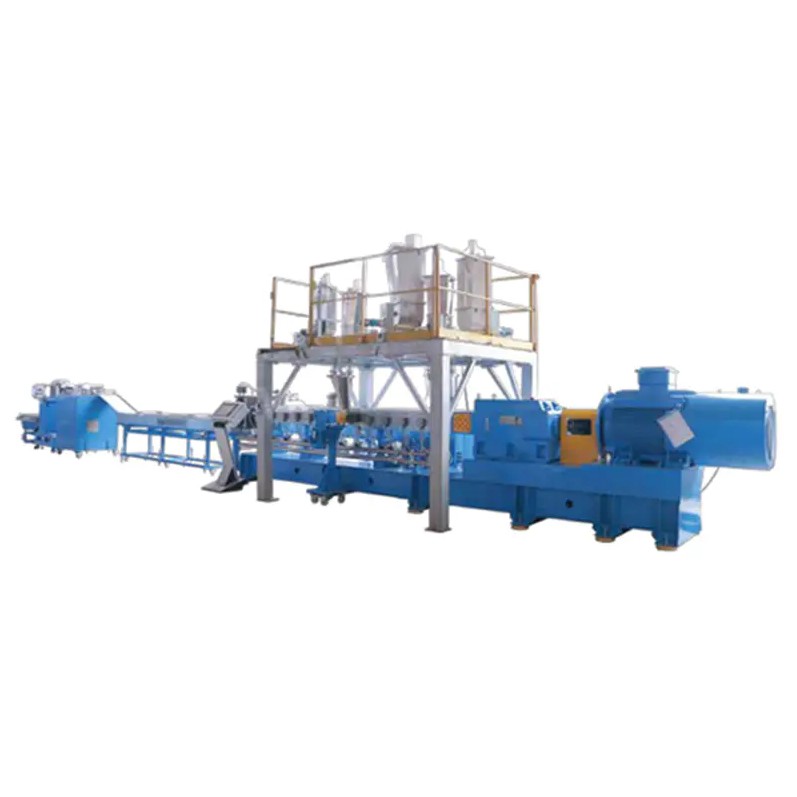An effective plastic pelletizing line typically consists of several key components, each playing a crucial role in the process of transforming raw plastic materials into high-quality pellets. Here are the key components:
Feed System: The feed system is responsible for delivering raw plastic materials to the pelletizing line. It may include equipment such as conveyors, feed hoppers, and pre-processing machinery like shredders or granulators to prepare the plastic for pelletization.
Extruder: The extruder is a primary component of the pelletizing line where the plastic material undergoes melting, mixing, and pressurization. It consists of a screw or screws housed within a barrel, which heats, compresses, and conveys the plastic through a die to form continuous strands or strands.
Die Plate: The die plate, also known as the pelletizing die, is a critical component that shapes the molten plastic into uniform strands or pellets. It features multiple small holes through which the plastic is forced, creating individual pellets of desired size and shape.
Pelletizer: The pelletizer cuts the continuous strands of molten plastic into uniform pellets of the desired length. Various types of pelletizers are available, including strand pelletizers, underwater pelletizers, and air-cooled pelletizers, each offering specific advantages depending on the application and material requirements.
Cooling System: After pelletization, the newly formed plastic pellets must be cooled to solidify and stabilize their shape. Cooling systems, such as water baths, air cooling chambers, or cooling conveyors, remove heat from the pellets, ensuring they maintain their integrity and quality.
Classification and Screening Equipment: Classification and screening equipment remove any oversized or undersized pellets, as well as impurities or contaminants, ensuring the final product meets quality standards. This equipment may include vibrating screens, classifiers, or air separators.
Drying Equipment: Some plastic materials may retain moisture during the pelletizing process, which can affect pellet quality and downstream processing. Drying equipment, such as desiccant dryers or hot air dryers, removes moisture from the pellets, enhancing their stability and performance.
Packaging and Handling Systems: Once pelletized and dried, the plastic pellets are typically packaged into bags, boxes, or containers for storage, transportation, and further processing. Packaging and handling systems may include conveyors, bagging machines, palletizers, and labeling equipment.
Control and Monitoring Systems: Control and monitoring systems oversee and regulate various parameters throughout the pelletizing process, such as temperature, pressure, throughput, and pellet quality. Advanced automation and instrumentation technologies ensure consistent operation and product quality.
Safety Features: Safety features, such as guards, interlocks, emergency stop buttons, and safety sensors, are essential components of a pelletizing line to protect operators and equipment from hazards associated with high temperatures, moving parts, and material handling.
An effective plastic pelletizing line integrates these key components to efficiently and reliably produce high-quality plastic pellets suitable for a wide range of applications, from injection molding and extrusion to compounding and recycling. Each component plays a vital role in achieving optimal performance, productivity, and product quality in the pelletizing process.
What Are the Key Components of an Effective Plastic Pelletising Line?
Invest In Our Cost-Effective Twin Screw Extruders To Increase Your Return On Investment.
Contact Us


